Email marketing. Everyone uses it. But not everyone uses it effectively. Understanding that email marketing is not a one-shot event, but instead, a process aimed at creating a conversation to lead to new business is your first step.
Email marketing isn’t like direct mail. While you can send big documents through email, most email traffic consists of short messages conducted in the context of a back-and-forth conversation. Email is a conversation, not a one-way distribution.
The best way to envision email marketing is as a process consisting of several short, tight emails that attempt to open a conversation (i.e., get an email response). It’s only after you’ve gotten into that back-and-forth conversation that you ask for a meeting.
Take a look at some of the general types of email stages:
The List. Before doing any emailing, trim your list down to prospects whose profile suggests they’ll be interested in your offering. That way it’s not spam.
First Email. This should be 3-4 sentences long and contain only enough information to intrigue the recipient.
Follow-Ups. If you do not get a response to your initial email, you follow up with two reminder emails (i.e., “Did you get a chance to think about this?”). These reminders are forwards of the initial email. They don’t contain more information.
Last Chance. This is a third email that offers the prospect a last chance to respond. If there’s still no response, you can assume you’re pursuing a dead end.
Additional Research. If you do get a response to either the initial email, the follow-ups or the last chance, do additional research on that prospect. Your goal is to connect what you’re offering to what that prospect specifically needs.
Qualification Email. This is a customized email describing the potential match between your offering and the prospect’s needs, based upon your research. This can be longer than the initial email but not an information barrage. Go for relevance, not volume.
Meeting Request. If you feel you’ve made a particularly strong case, you can ask for the meeting (telephone or in person) in the qualification email. However, if you’re not almost 100 percent certain you’ve built a case, go for a “Yes, this sounds good” response from the prospect.
Other Contact Methods. You can increase the likelihood of a response to all of your emails by simultaneously using additional contact methods such as voice mail, a personal letter, social media engagement, and so forth.
The number one secret of email marketing is to make your initial email as short and tight as possible. Of course, most initial emails will have a lower response rate, but basing your follow-up emails on a strong initial email can add another 5-10 percent (per follow-up) to your overall response rate. Bottom line: tighter the writing, the higher the response rate.
Remember that even with an almost perfect initial email, the number of meetings you actually land will depend upon how much and how well you customize the qualification email to match the specific prospect.
